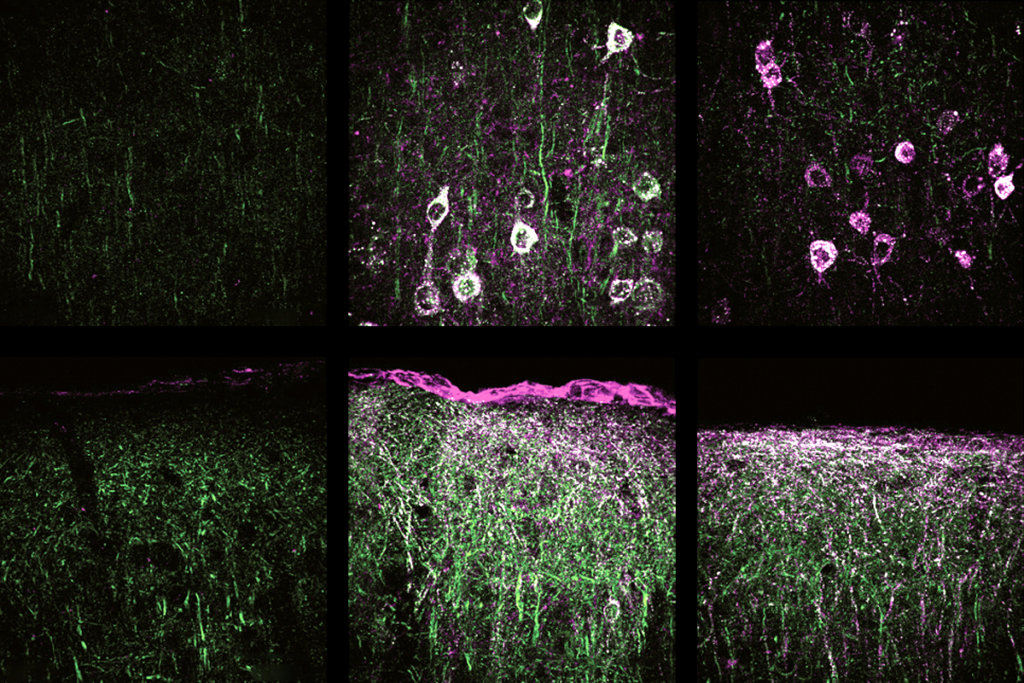Analysis of new diagnostic criteria for autism sparks debate
A new analysis of proposed changes to the diagnostic criteria for autism suggests that the revision could exclude a substantial number of people with high-functioning autism. But critics say the study is fundamentally flawed.
A new analysis of proposed changes to the diagnostic criteria for autism suggests that the revision could exclude a substantial number of people with high-functioning autism1.
But the findings, published in April in the Journal of the American Academy of Child and Adolescent Psychiatry, have aroused great controversy in the scientific community, fueling an already contentious debate over whether the changes, still in draft form, are too drastic.
Some say the study highlights a potentially significant problem with the new guidelines: that people on the high-functioning end of the autism spectrum and those without certain symptoms, such as repetitive behaviors, might no longer be diagnosed as having the disorder and could potentially lose the services that go along with that classification.
“This is such a marked departure from existing criteria that there will be major consequences,” says Johnny Matson, professor of psychology at Louisiana State University. Matson was not involved in the new study but has published research that supported a similar conclusion2.
But the researchers who devised the new criteria, which are due to be published in May 2013 in the newest version of the Diagnostic and Statistical Manual of Mental Disorders (DSM), or DSM-5, are highly critical of the new study and say it needlessly raises concern among clinicians and families.
“I think this paper is completely flawed and has unnecessarily created concern among a very vulnerable population, including the families,” says Joseph Piven, professor of psychiatry at the University of North Carolina, Chapel Hill, and a member of the DSM-5 Neurodevelopmental Disorders Work Group.
As evidence of the contentiousness of the debate, the paper is accompanied by two contrasting commentaries: one from the DSM-5 Neurodevelopmental Disorders Work Group and one from David Skuse, chair of behavioral and brain sciences at University College London, as well as a letter from the journal’s editors explaining the decision to include them.
Out with the old:
The new criteria for diagnosing autism represent a substantial change from the current version, established by the DSM-IV in 1994. The DSM-5 collapses the traditional triad of autism symptoms — deficits in communication, problems with social reciprocity, and rigid thoughts and behavior — into just two classes: social communication and interaction; and repetitive and restricted behavior.
It also brings several different diagnoses, including Asperger syndrome and pervasive developmental disorder-not otherwise specified (PDD-NOS), under the single heading of autism.
To meet the new criteria, individuals must have deficits in three different types of social communication, including nonverbal communication skills used for social interaction, and developing and maintaining relationships, and exhibit two of four repetitive and restricted behaviors, such as excessive adherence to routines and highly restricted, fixed interests.
The goal of creating the new criteria was to help standardize diagnosis. Previous research has shown that although clinicians at different autism centers tend to score children the same way on screening tests, the ultimate diagnosis they assign, such as Asperger syndrome or autistic disorder, is most closely linked to the center, not to the resulting scores3.
Criticism of the new guidelines has centered on three points: the validity of the transition from the triad to a dyad of symptoms, the creation of a single spectrum disorder rather than a group of related disorders, and whether the new criteria are too narrow.
Two recent studies have validated the draft change from the triad to dyad.
The new study focuses in large part on the last point, the sensitivity of the DSM-5, which seems to be the most controversial. Fred Volkmar and his collaborators at Yale University reanalyzed data originally collected in the early 1990s as part of the field tests for the DSM-IV.
The data came from surveys collected during the field trials for the DSM-IV, carried out in the early 1990s. The surveys encompassed criteria from both the DSM-IV and the earlier DSM-III, which were collected from nearly 1,000 people: 657 diagnosed with autism spectrum disorders and the remainder with disorders not related to autism. To estimate the specificity and sensitivity of the DSM-5 criteria, researchers matched survey questions from the original study to the items in the DSM-5 checklist that they judged to be closest in wording and meaning. (Sensitivity means correctly detecting those who have the disorder, and specificity refers to accurately excluding those who do not.)
The new version is “much more specific but less sensitive,” says James McPartland, one of the researchers involved in the study.
According to the findings, only about 60 percent of people who were given a clinical diagnosis of an autism spectrum disorder in 1994 meet the new diagnostic criteria. Specific numbers vary by the type of diagnosis and by intelligence quotient (IQ). For example, about 25 percent of those with Asperger syndrome and 28 percent of those with PDD-NOS are still classified as having autism. Among people with lower IQs, 70 percent meet the new criteria, whereas only 46 percent of people with higher IQs meet the definition.
“It’s not just that the criteria of DSM-5 narrow the spectrum across the full range of IQ,” says Skuse. “According to this analysis, it disproportionately narrows for those on the higher end of the spectrum.”
A handful of other recent studies have come to a similar conclusion4.
More data:
Cathy Lord, one of the members of the DSM-5 work group, disagrees with the basic premise of the new paper and similar efforts that have evaluated the new criteria using older data. She says that it’s impossible to use the DSM-5 with information collected from older versions.
“The DSM-5 is deliberately broader,” she says, so it’s not surprising that an analysis based on DSM-IV criteria would exclude some people. “They didn’t ask the questions, so the data just isn’t there,” she says. The DSM-5, for example, includes sensory issues in the list of possible autism symptoms, which were not part of the earlier surveys.
She also disagrees that the new guidelines will shrink the number of people who are diagnosed with the disorder. “The point of the DSM-5 is to expand the ways a person can meet the criteria for autism,” says Lord. “The intention was to better capture older verbal people, and to more accurately reflect what clinicians are doing.”
Volkmar concedes that the data used in the study may be a limitation but says the findings are part of growing number coming to the same conclusion.
“My worry is it’s a more major change than they anticipate,” says Volkmar. “If our conclusions are correct, a chunk of people will lose their label, and they may lose services.”
The argument is unlikely to be resolved without more data.
McPartland’s group is now analyzing newly collected data to compare the two sets of diagnostic criteria more directly, as well as analyzing data from research studies, which typically collect much more extensive information than do clinical diagnostic tests. “We should have lots of information very soon,” he says.
Lord also has a study coming out soon, which she says is the most comprehensive assessment to date of the newly proposed criteria.
Data collection for the field studies of the DSM-5, in which thousands of people have been analyzed using a shortened version of the guidelines, is complete. Researchers will now compare the results of the DSM-IV and DSM-5 criteria and clinical diagnosis.
Perhaps the most practical question, and the most important one for families, is whether children with impairments, whatever the diagnosis, are getting the help they need.
“How much autism do you have to have to be significantly functionally impaired?” asks Skuse. “I don’t think anyone has the answer to that.”
Addressing that question is a major challenge, in large part because measuring functional impairment is so difficult. “We need research on whether children at the borders benefit from additional services,” says Matson. Such a study would need to be large-scale and would take several years, he says.
References:
1: McPartland J.C. et al. J. Am. Acad. Child Adolesc. Psychiatry. 51, 368-383 (2012) PubMed
2: Worley J.A. and J.L. Matson Res. Autism Spectr. Disord. 6, 965-970 (2012) Abstract
3: Fischbach G.D. and C. Lord Neuron 68, 192-195 (2010) PubMed
4: Mandy W. et al. Autism Res. 4, 121-131 (2011) PubMed
Recommended reading

Autism scientists push back on CDC’s inaccurate vaccine claims

Gene replacement therapy normalizes some traits in SYNGAP1 model mice
Explore more from The Transmitter

Neurophysiology data-sharing system faces funding cliff

